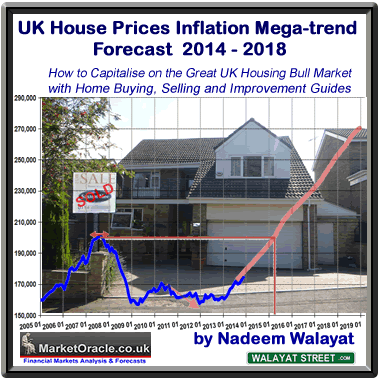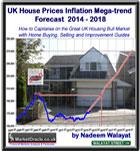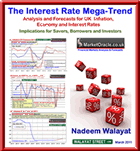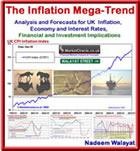UK Climate Change Floods House Prices Crash Could Hit 20% of Properties
Housing-Market / UK Housing Dec 08, 2015 - 08:25 PM GMTBy: Nadeem_Walayat
 What were supposed to be once in century floods are now occurring every 5 years or so as the North of England has been witnessing this past week, as the consequences of climate change is starting to make it's real extreme weather effects become manifest with costly consequences for home owners and not just in terms of costly repairs and replacements but the negative hit on house prices right across the UK as the escalating future consequences of climate change will increasingly be factored into home buying decisions.
What were supposed to be once in century floods are now occurring every 5 years or so as the North of England has been witnessing this past week, as the consequences of climate change is starting to make it's real extreme weather effects become manifest with costly consequences for home owners and not just in terms of costly repairs and replacements but the negative hit on house prices right across the UK as the escalating future consequences of climate change will increasingly be factored into home buying decisions.

Storm Desmond has wrecked havoc across the North of England with gale force winds and record levels of rainfall, with the Cumbria region the worst hit suffering widespread loss of power and flooding of over 6,000 properties.
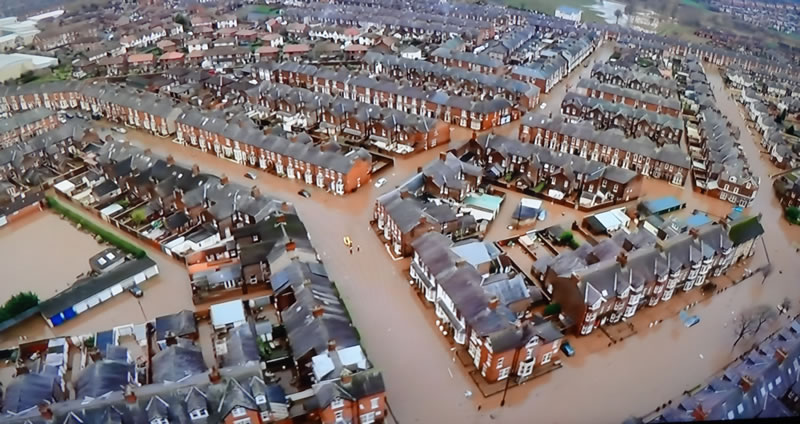
Less than 2 years ago it was the South of England that was being hit by once in a century floods as a series of Jet stream driven storms dumped huge amounts of water over most of Southern England every 2 to 3 days, far beyond the capacity of the river systems to cope with that were continuously overflowing onto already saturated land resulting in ever escalating flood alert warnings as illustrated by the below map.
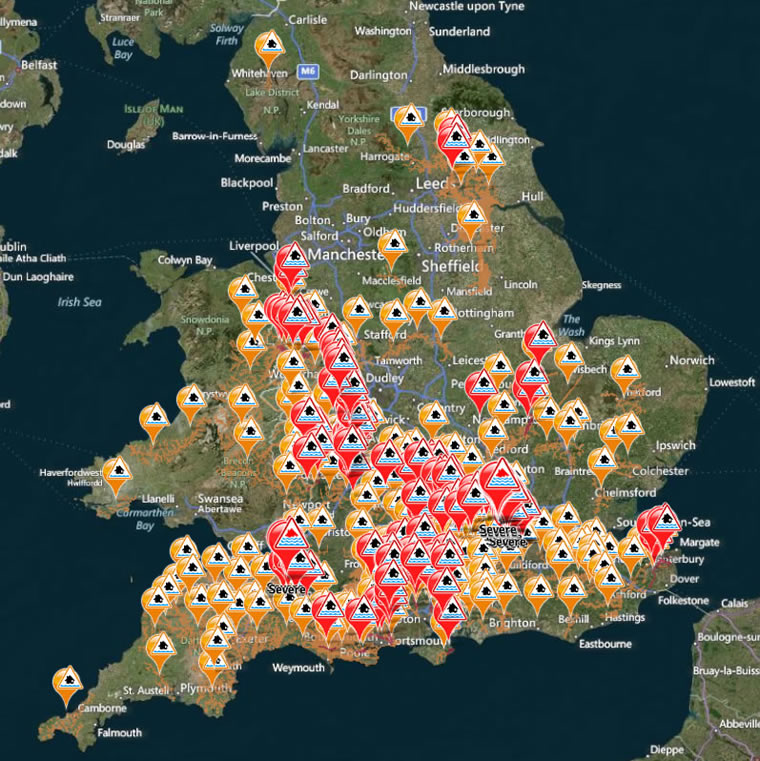
Many scientists use the term Global Weirding to describe what is taking place with our climate as melting of the sea ice at the north and south poles effects atmospheric air current circulations such as the diversion of the Jet Stream resulting in the ongoing series of extreme weather events, where this and early 2014 it was heavy rainfall and for the year before it was extreme cold and snowfall.
Whilst prospective home buyers can change many aspects of their properties after purchase, however one thing they cannot change is the geography of the location so it is of utmost importance that home buyers seek to mitigate the risk of flooding as a consequence of climate change by following a few simple rules in their property selection process so as to prevent making a disastrous decision resulting in buying a property that they may be unable to re-sell at a later date.
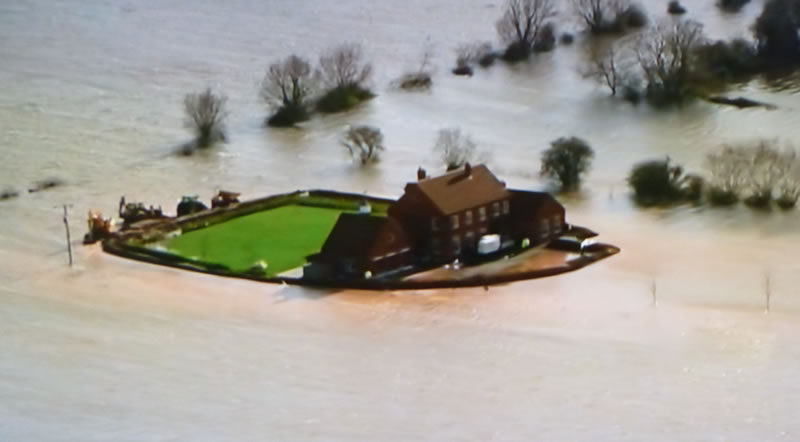
The problem of homes being flooded can only worsen not only as a consequence of climate change but also due to the madness of over 10,000 homes continuing to be built on flood plains each year with desperate buyers enticed to purchase at discounts of 10% to 20% against similar properties on higher ground, with an estimated 18% of homes now being at risk of flooding, up from 17% a year ago.
House Prices Crash
Whilst homes flooded this month are going to be hit hard in terms of plunging home valuations. However, these only form the tip of the flood risk house prices crash ice-berg as it begins to slowly dawn on prospective home buyers that once in a century floods could become annual events. Therefore this ultimately spells doom for the house price valuations of as many as 20% of Britain's homes.
Home Buying and Future Flood Risks
The key points to consider in terms of the evaluating the risk of flooding is not just whether the property is near the coast and thus subject to sea level rise but also how far is the property in terms of its distance in height from the valley floor / river basin. This can be worked out by comparing the difference in elevation by subtracting the properties ground floor height above sea level against the height above sea level of the nearest valley / river basin i.e. a property 50 metres above sea level against the nearest river that is 30 metres above sea level would put the property at +20metres above the river basin.
In my opinion, home buyers should as a minimum not buy properties of less than 30 metres above sea level AND 10 metres in elevation from the valley floor / height of the normal river, even though this would remove many properties out of potential target locations and will extend to far beyond the environment agency's own current flood maps that tend to only cover 2 to 4 metres above the normal height of nearby rivers as recognised flood plains.
However, the reason for the extra minimum height is to not only guard against the uncertain future as a consequence if climate change induced sea level rise and heavy rain fall flooding, but also to allow for failure of the drainage system which means that properties tend to flood to several metres above the height of overflowing rivers. Therefore following the minimum 10metre rule (higher the better) will not only prevent flooding but act to protect house price valuations against an across the board mark down of all properties within a few meters elevation of the flood risk zone.
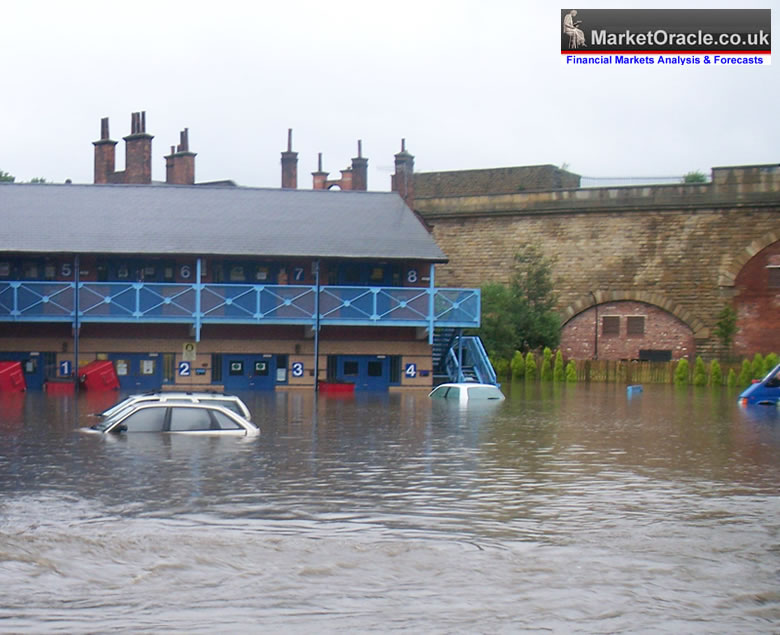
More reasons to only consider properties well out of range of a flood plain / river basins is that even if a property has never flooded, just by being near a flood risk area is enough to increase insurance premiums or worse make properties uninsurable that would put off many prospective home buyers and thus result in deep under valuation at time of selling of anywhere between 15% to 40% as compared to similar properties situated on as little as 10 metres higher ground.
So again as a general rule prospective home buyers should not contemplate buying properties that are less than 10 metres above the height of any nearby river, water way or valley floor which puts virtually all riverside and flood plain properties out of contention so as to mitigate both the risks of actual flooding and negative effects on house prices.
Furthermore as the global warming climate change mega-trend continues to play out properties that are far beyond the flood plains and valley floors are increasingly look set to secure an ever increasing price premium over lower lying properties of even on the same street.
The starting point in understanding the flood risks of one's target location is to visit the Environment Agency's website and enter the post code for the area, this will give an over view of the local flood map. Then use this as a guide to compare against elevation maps of the target area, finally fine tuning down to individual properties and aiming to ensure that they are well beyond the minimum 10 metre height from the normal river levels.
For those already stuck with properties within few metres height of rivers or situated on flood plains then the only solution apart from attempting to move when the dust settles is to have effective plans in place to cope with inevitable flooding such as having temporary barriers and a pump on standby, and ensuring drains are fitted with non return valves.
For those who remain determined to buy properties despite being on a flood plain then they need to ensure that the property has been built with flood defences in mind i.e. built on stilts that put the property at least 1.5 metres above the highest preceding recorded flood. Unfortunately rather than being the norm most new build properties on flood plains do not tend to incorporate such structural defences such as having the residency area built over a ground floor garage which effectively adds 3 metres to the ground floor height to the properties.
For more guides on what to look for when buying properties see my UK Housing Market ebook (FREE DOWNLOAD).
Ensure you are subscribed to my always free newsletter for ongoing in-depth analysis and concluding detailed trend forecasts that include the following planned newsletters -
- US House Prices Forecast 2016
- US Dollar Trend Forecast
- London House Prices Bubble
- Stock Market 2016
- Islam 3.0
 Also subscribe to our Youtube channel for notification of video releases and for our new series on the 'The Illusion of Democracy and Freedom', that seeks to answer questions such as 'Did God Create the Universe?' and how to 'Attain Freedom' as well as a stream of mega long term 'Future Trend Forecasts'.
Also subscribe to our Youtube channel for notification of video releases and for our new series on the 'The Illusion of Democracy and Freedom', that seeks to answer questions such as 'Did God Create the Universe?' and how to 'Attain Freedom' as well as a stream of mega long term 'Future Trend Forecasts'.
By Nadeem Walayat
Copyright © 2005-2015 Marketoracle.co.uk (Market Oracle Ltd). All rights reserved.
Nadeem Walayat has over 25 years experience of trading derivatives, portfolio management and analysing the financial markets, including one of few who both anticipated and Beat the 1987 Crash. Nadeem's forward looking analysis focuses on UK inflation, economy, interest rates and housing market. He is the author of five ebook's in the The Inflation Mega-Trend and Stocks Stealth Bull Market series that can be downloaded for Free.
 Nadeem is the Editor of The Market Oracle, a FREE Daily Financial Markets Analysis & Forecasting online publication that presents in-depth analysis from over 1000 experienced analysts on a range of views of the probable direction of the financial markets, thus enabling our readers to arrive at an informed opinion on future market direction. http://www.marketoracle.co.uk
Nadeem is the Editor of The Market Oracle, a FREE Daily Financial Markets Analysis & Forecasting online publication that presents in-depth analysis from over 1000 experienced analysts on a range of views of the probable direction of the financial markets, thus enabling our readers to arrive at an informed opinion on future market direction. http://www.marketoracle.co.uk
Disclaimer: The above is a matter of opinion provided for general information purposes only and is not intended as investment advice. Information and analysis above are derived from sources and utilising methods believed to be reliable, but we cannot accept responsibility for any trading losses you may incur as a result of this analysis. Individuals should consult with their personal financial advisors before engaging in any trading activities.
Nadeem Walayat Archive |
© 2005-2022 http://www.MarketOracle.co.uk - The Market Oracle is a FREE Daily Financial Markets Analysis & Forecasting online publication.




